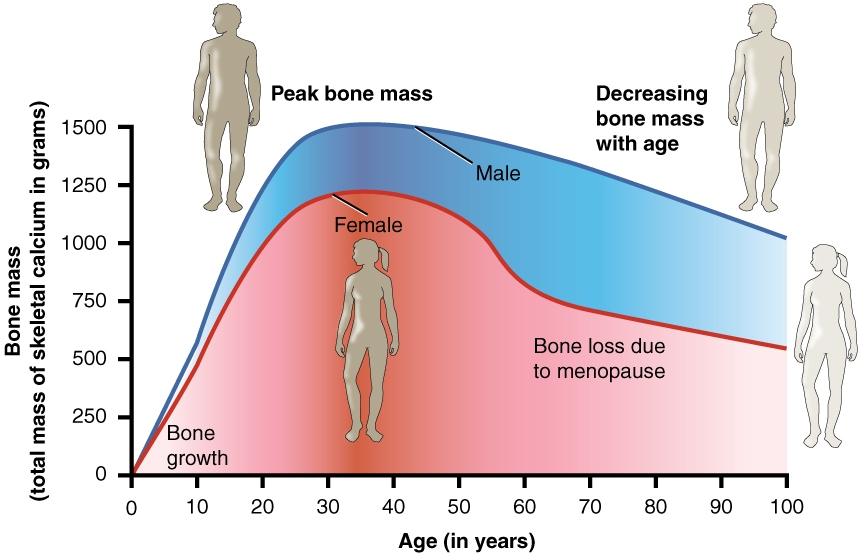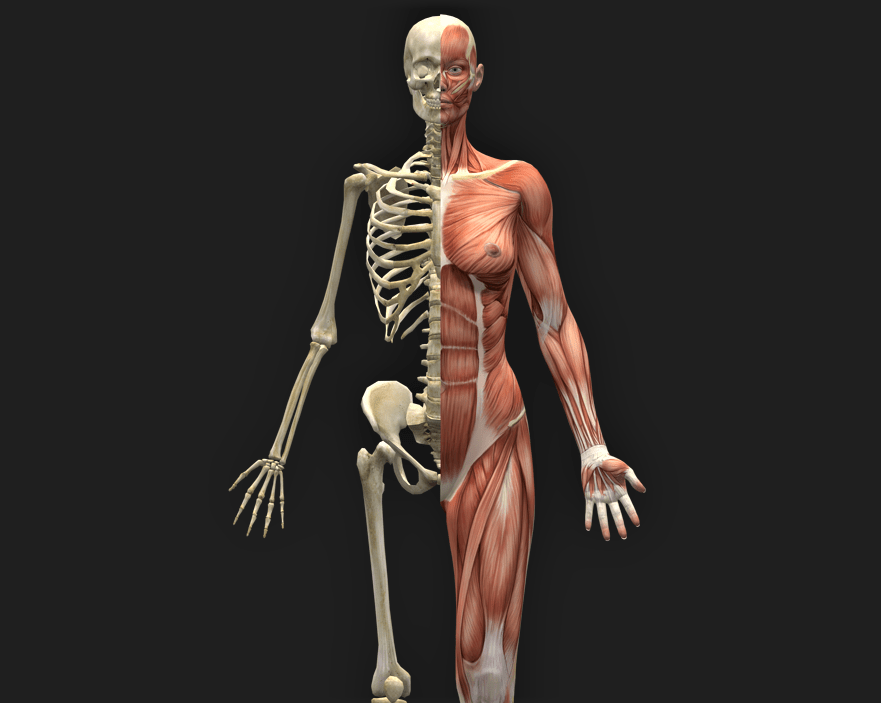Let’s bone up on bone density. We all know strength training is associated with muscle growth and improved physical performance. However, it’s also been shown to increase bone density. In turn, stronger bones can hold up heavier weights and fend off some training injuries. Your skeleton is your frame and your foundation. This article explores the relationship between strength training and bone density, highlighting the scientific evidence supporting this connection.
UNDERSTANDING BONE DENSITY
Bone density refers to the amount of mineral content, primarily calcium and phosphorus, present in bone tissue. It is a key indicator of bone strength and plays a crucial role in preventing fractures and maintaining overall skeletal health. Higher bone density indicates stronger bones and a reduced risk of osteoporosis, a condition characterized by low bone mass and increased susceptibility to fractures.
BONE DENSITY AND AGING
For most people, bone density peeks sometime around 35 and their skeleton begins literally wasting away as they descend towards brittleness and, too often, osteoporosis, and broken hips. The good news is this can be avoided, or at least curtailed.

IMPACT OF STRENGTH TRAINING ON BONE DENSITY
When muscles contract against resistance when weight-training, it generates mechanical stress on the bones. This mechanical stress stimulates the body to adapt and strengthen the bones to withstand the applied force. Osteoblasts, specialized cells responsible for bone formation, become more active, resulting in increased bone mineral density. Over time, this adaptation leads to stronger and denser bones.
STRENGTH TRAINING INCREASES BONE DENSITY: SCIENTIFIC EVIDENCE
A study published in the Journal of Bone and Mineral Research examined the effects of resistance training on bone density in postmenopausal women. The results showed significant improvements in bone mineral density at the lumbar spine and hip after six months of progressive resistance training [1].
Another study published in the Journal of Applied Physiology investigated the impact of resistance training on bone mineral density in older men and women. The participants who engaged in strength training for one year experienced a substantial increase in bone density at various skeletal sites compared to the control group [2].
A systematic review published in Sports Medicine analyzed the existing research on resistance training and bone health. The review concluded that strength training has a positive effect on bone mineral density, particularly in the spine and hip, and is beneficial for preventing osteoporosis [3].
STRENGTH TRAINING INCREASES BONE DENSITY: CONCLUSION
The evidence suggests that strength training plays a significant role in increasing bone density, contributing to improved skeletal health and reducing the risk of fractures. By subjecting bones to mechanical stress through resistance exercises, the body responds by increasing bone mineral density and strengthening the skeletal structure. However, individual factors such as age, genetics, and overall health may influence the magnitude of bone density improvements.
Finally, strength training is just one aspect of maintaining optimal bone health. A well-rounded approach, including a balanced diet rich in calcium and vitamin D, regular weight-bearing activities like walking or jogging, and avoiding smoking and excessive alcohol consumption, is crucial for maintaining and improving bone density.
REFERENCES
1. Layne JE, Nelson ME. The effects of progressive resistance training on bone density: a review. Med Sci Sports Exerc. 1999 Jan;31(1):25-30.
2. Kerr D, Morton A, Dick I, Prince R. Exercise effects on bone mass in postmenopausal women are site-specific and load-dependent. J Bone Miner Res. 1996 Jan;11(1):218-25.
3. American Academy of Orthopedic Surgeons. Exercises and Bone Strength. Accessed June 7, 2023. Link.
Related: How to Increase Bone Density
















































